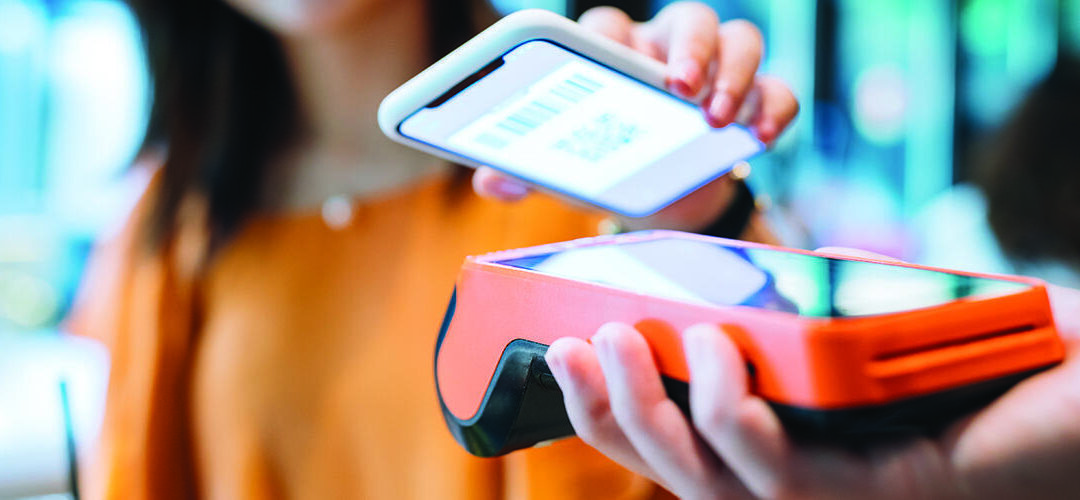Change has accelerated rapidly in retail, especially when it comes to technology. Much of this transformation was born of necessity in the early months of the pandemic, when social distancing guidelines placed restrictions on in-person shopping.
This forced organizations to build infrastructure that could support digital channels and properly track inventory across different transactions. Many believed that when pandemic guidelines were eased, shoppers would maintain these digital habits long-term, but that hasn’t been the case. According to research from NRF, only about 10 percent of transactions happen online, showing that the in-store experience is still crucial the industry.
“As we started to come through the other side of COVID — and obviously we’re still coming through the other side — the issue became, how do I bring the customer back to the store?” says Andy Szanger, a corporate sales director at CDW who focuses on retail.
He says that there is significant upside for retailers who can keep those transactions in-store.
“There’s additional cost associated with implementing any type of online or home delivery, or using some of these delivery services,” Szanger says. “A good portion of the profitability in-store comes from impulse purchases. Shoppers are much more likely to make impulse purchases when they’re in stores and interacting with products.”
One of the critical aspects of an in-store experience is checkout, which can be a point of conflict for customers who don’t want to wait in line or have too much interaction with sales associates. Modernizing checkout can provide a frictionless experience while empowering innovation.
NRF 2022: Follow BizTech’s coverage of Retail’s Big Show.
Build Strong Connectivity to Power Modern Checkout
Organizations that want to modernize transactions for their customers need to start with basic infrastructure. Networking is key in this area, as organizations must ensure all of their checkout solutions are connected to the same place.
“It starts with the connectivity piece,” says Szanger. “That’s really the foundation, to make sure you can build everything else on top of it.”
“If you don’t have the right connection to your data, it doesn’t matter what your point-of-sale solution is,” he adds. “You have to have a good, solid connection that’s fast and consistent, that just simply works.”
Next-generation tools such as 5G and Wi-Fi 6 provide big benefits for both workers and customers. For employees, this strong connectivity creates a seamless experience when managing inventory or processing transactions. In a modern retail space, these operations can happen from any corner of a store, making mobility key.
For customers, it has become standard to research products before buying them. Even when browsing in person, shoppers may want to look up additional information about what they intend to purchase, compare prices or even attempt to combine online coupons for their transaction. If customers don’t have service on their phones, they may walk out empty handed.
Click the banner below to follow the most influential voices in retail technology.
Enhance the Performance of Applications
App performance is another foundational pillar of checkout modernization. Retailers can deploy all the cutting-edge point-of-sale solutions they like, but if there is application latency, the customer will have a slow checkout experience, and that might drive them to a competitor.
When looking at application performance, organizations need to consider both power and infrastructure, Szanger says.
“There are two main components to application performance,” he says. “One is edge computing, to make sure you have that compute power where you need it and can complete the transaction. The other is application modernization, making sure that your applications are performing at peak levels.”
In addition to smooth performance, applications also need to be integrated across the organization’s tools. This includes connection to inventory management programs and data analytics platforms, with automation built in for real-time updates. It is also crucial to refresh and update these applications as needed to ensure peak performance.
MORE FOR RETAIL: Dive deeper into the tech trends that will shape the industry in 2022.
Tools That Transform the Point of Sale
The point of sale is the foundational checkout pillar that has the most visibility to customers. It is the aspect of a transaction that shoppers most closely associate with their in-store experience, and limiting the friction in this part of the customer’s journey is key. Some tools, such as contactless payments, have become standard since the start of the COVID pandemic.
“A lot of research shows that consumers now, more than ever, want to have those contactless payments, cashless transactions, from a safety and health perspective, but also from a convenience perspective,” Szanger says.
Mobile POS can provide layered benefits: mPOS can make employee operations more convenient, keep checkout lines from getting too long, and allow customers to make their purchases more quickly. For larger stores, that mobility allows managers to control the store flow and is particularly crucial to providing a modernized experience.
Modernized checkout solutions are just the beginning of what retailers can ultimately achieve, Szanger says.
“This will allow retailers to move forward,” he says. “Whether that means self-checkout, implementing kiosk solutions or other experiential moments within their stores, this sets the foundation for all of that.”






